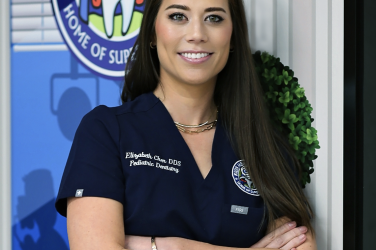
Q&A
What Is Palliative Care?
Palliative care is symptom management which can be received at any point on the continuum of disease. A person with a new cancer diagnosis, for example, could benefit from the management of expected symptoms. Services patients receive with VNA’s community-based, Supportive Palliative care include visits from a physician or nurse practitioner, social worker, chaplain, and other members of an interdisciplinary team. It is important to note that while hospice is considered to be one type of palliative care, a patient’s diagnosis does not have to be considered terminal for them to receive palliative care.
When Should Patients And Families Consider Hospice Care For A Loved One Or Themselves?
If a patient has been given a prognosis of fewer than six months to live, they can elect to receive hospice care. Many times, the disease does not run its normal course, and the patient will continue to receive care well beyond that six-month mark. Even so, it is our preference and recommendation that patients begin the journey as soon as possible, as it permits more time to build relationships with the team, complete proper end-of-life planning, and allows the patient to experience an overall higher quality of life. If a family or patient is trying to determine whether palliative or hospice care is appropriate, they can reach out to VNA directly for a consultation.
Where Does Hospice Care Take Place?
There are multiple levels of care, ranging from routine home care to continuous care in an inpatient facility. The vast majority of cases are routine home care cases in which the team comes to the patient’s home, whether that is their house, an assisted living facility, or even an extended-stay hotel. In other words, patients are not required to be admitted to a special facility to receive hospice care.
What Do I Do If My Loved One Requires A Higher Level Of Non-medical Care?
Hospice and palliative care can provide the medical portion of care to patients, but there is often a gap when it comes to the nonmedical component of caregiving. This can be as simple as sitting with a patient to ensure they don’t fall, helping them get to the restroom, preparing meals, or getting dressed. In those situations, we recommend they request the assistance of a medical social worker, whose role is to help patients discover and understand all their options when it comes to resources for healthcare, insurance, and non-medical caregiving.
How Is Vna Working To Make Hospice And Supportive Palliative Care More Accessible To The Public?
There are many misconceptions about palliative and hospice care, largely because it has not been well-defined by Medicare. To combat this, we work closely with the National Hospice and Palliative Care Organization as well as the Texas/New Mexico Hospice Organization to standardize care through legislative change, while securing better funding for end-of-life care. We also educate the public by partnering with various oncology groups, community health fairs, medical schools, and nursing schools throughout 16 counties in the DFW area.
About The Expert

Olivia Rogers, RN, BSN, CHPN, CHPO, MBA
Visiting Nurse Association
Olivia spent most of her nursing career in critical care, specifically ICU/CCU before joining the Visiting Nurse Association (VNA) in 2010. Since then, she has been a field nurse, case manager, branch manager, and is now the vice president and chief nursing officer for Visiting Nurse Association of Texas (VNA).









